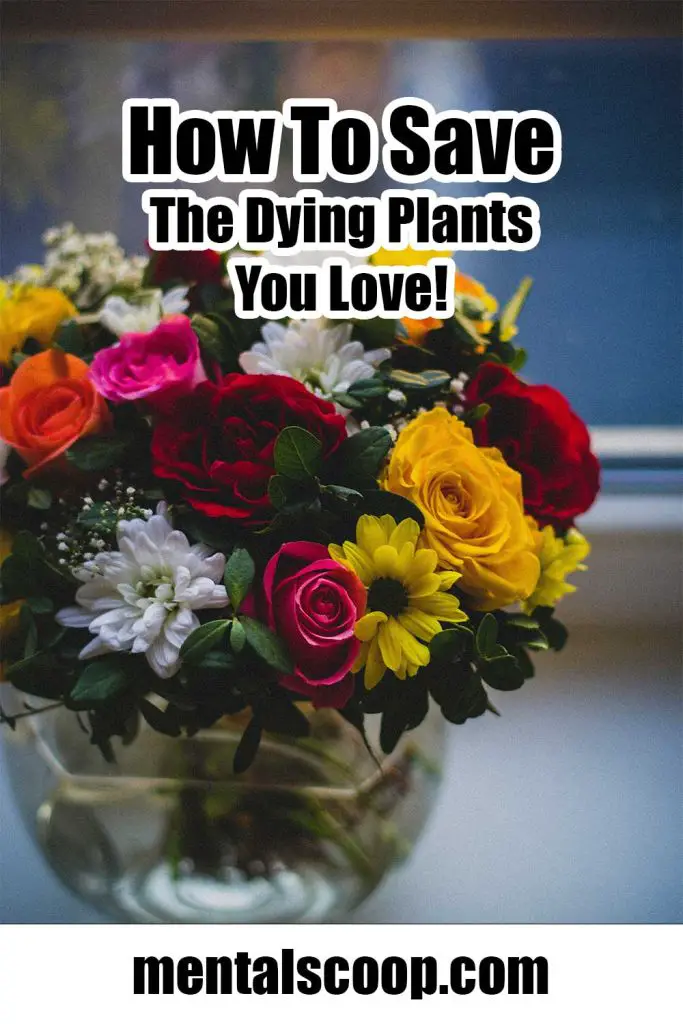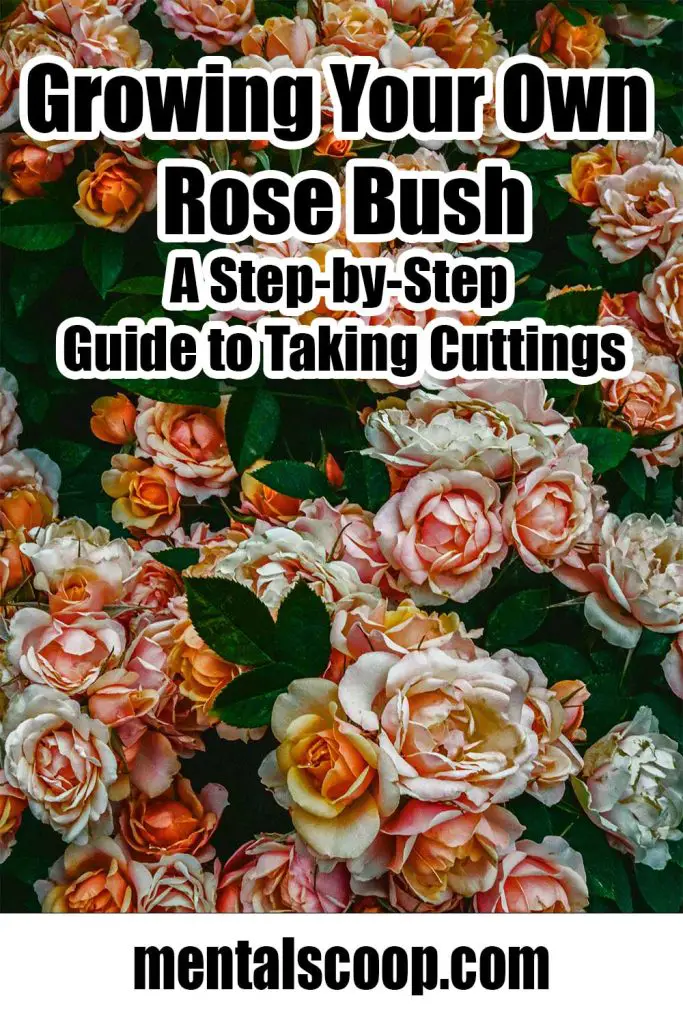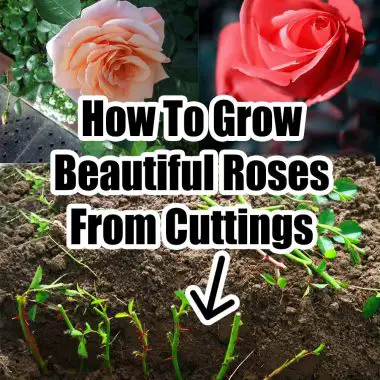How To Save The Dying Plants You Love!

As plant lovers, we all know the heartbreak of watching a beloved plant begin to wilt, yellow, or drop leaves. But don’t give up on your plant just yet! There are several ways to revive a dying plant and bring it back to its former glory. Here are some tips to help you save your struggling plant:
Identify the problem
Identifying the problem is an important first step in saving a dying plant. There are several factors to consider when diagnosing a plant’s issues:
Soil moisture: Check the soil moisture level by sticking your finger about an inch into the soil. If it feels dry, the plant may need more water. If it feels wet or soggy, the plant may be overwatered and need to dry out.
Lighting: Observe the plant’s location and determine whether it’s getting the right amount of light. Some plants require direct sunlight, while others prefer indirect or low light.
Temperature: Check the temperature of the room or area where the plant is located. Most plants prefer a consistent temperature between 65-75 degrees Fahrenheit.
Pests: Inspect the plant for any pests, such as spider mites, aphids, or mealybugs. Look for signs of damage, such as holes in the leaves or webbing.
Diseases: Look for any signs of disease, such as brown spots, blackened leaves, or mold.
Once you’ve identified the problem, you can take steps to correct it. For example, if the plant is overwatered, you may need to cut back on watering or improve the drainage in the pot. If the plant is not getting enough light, you may need to move it to a sunnier location or add a grow light. If pests are present, you can manually remove them or use an appropriate insecticide.
It’s important to note that some plant issues may be caused by multiple factors. For example, a plant may be struggling due to a combination of overwatering and lack of sunlight. By identifying and addressing all of the issues, you can give your plant the best chance of recovery.
Adjust watering
Adjusting watering is an important step in saving a dying plant. Overwatering and underwatering are common causes of plant stress, and it’s essential to ensure that your plant is getting the right amount of water for its needs. Here are some tips on how to adjust watering to help revive a dying plant:
Check the soil moisture: Before watering your plant, check the soil moisture level by sticking your finger about an inch into the soil. If it feels dry, the plant needs water. If it feels moist or wet, wait a few days before watering.
Water thoroughly: When you do water your plant, make sure to water thoroughly. Water should flow out of the drainage holes at the bottom of the pot to ensure that the roots are getting enough water.
Don’t let the plant sit in water: Make sure to empty any excess water from the saucer or tray underneath the pot. Allowing the plant to sit in standing water can lead to root rot and other issues.
Adjust watering based on the season: Plants’ watering needs can vary depending on the season. In general, plants need less water in the winter when they are not actively growing and more water in the summer when they are growing rapidly.
Consider the plant’s specific needs: Different plants have different watering needs, and it’s important to research the specific needs of your plant. Some plants prefer consistently moist soil, while others prefer to dry out slightly between waterings.
If you suspect that your plant is being overwatered, you may need to cut back on watering or improve the drainage in the pot. If you suspect that your plant is being underwatered, you may need to water more frequently or adjust the amount of water you are giving the plant. By adjusting watering based on your plant’s specific needs, you can help it recover from its decline.
Check for pests
Checking for pests is an important step in saving a dying plant. Pests can cause a variety of issues, from feeding on the leaves to spreading diseases, and it’s essential to identify and address any pest problems as soon as possible. Here are some tips on how to check for pests and how to treat them:
Inspect the plant: Look closely at the leaves, stems, and soil of your plant for any signs of pests. Look for visible bugs, webbing, or damage to the plant.
Identify the pest: Once you’ve spotted pests, try to identify what kind they are. Different pests require different treatments, so it’s important to know what you’re dealing with. Common plant pests include spider mites, aphids, mealybugs, scale insects, and whiteflies.
Remove pests manually: If you spot a small number of pests, you can remove them manually with a cotton swab or by spraying them off with water. Be sure to dispose of any pests you remove from the plant.
Use insecticidal soap or oil: For larger infestations, you may need to use an insecticidal soap or oil. These products are designed to kill pests while being safe for plants. Be sure to follow the instructions on the product label carefully.
Treat the plant and surrounding area: After treating the plant, it’s important to clean the surrounding area thoroughly. Pests can easily spread to other plants, so be sure to isolate the affected plant and treat any nearby plants as well.
It’s important to note that prevention is the best defense against pests. Regularly inspecting your plants for pests and keeping them healthy can help prevent pest problems from occurring in the first place. If you do spot pests, addressing them promptly can help save your plant and prevent further damage.
Prune dead leaves and branches
Pruning dead leaves and branches is an important step in saving a dying plant. Dead or dying foliage can be a sign of a larger issue, such as overwatering, underwatering, pests, or disease. By removing dead or damaged leaves and branches, you can help redirect the plant’s energy towards healthy growth. Here are some tips on how to prune a dying plant:
Identify dead or damaged leaves and branches: Look closely at your plant for any leaves or branches that are wilted, discolored, or appear dead. These are the parts of the plant that need to be pruned.
Use the right tools: Use a clean, sharp pair of pruning shears or scissors to avoid damaging the plant. Clean the tools with rubbing alcohol before and after use to prevent the spread of disease.
Cut back to healthy growth: When pruning, cut back to healthy growth, making a clean cut just above a leaf or node. Avoid cutting into healthy tissue or leaving stubs.
Remove any debris: After pruning, remove any debris from the plant and the surrounding area. This can help prevent the spread of disease and pests.
Monitor the plant: Monitor the plant for any signs of improvement or further decline. Continue to provide the plant with proper care, including proper watering and light, and address any other issues that may be affecting the plant’s health.
It’s important to note that pruning should be done in moderation, as removing too many leaves or branches can stress the plant further. Only prune the parts of the plant that are dead or damaged, and avoid pruning healthy foliage. By pruning your dying plant, you can help promote healthy growth and give it the best chance of recovery.
Repot if necessary
Repotting a plant is another important step in saving a dying plant. Over time, plants can outgrow their pots, leading to issues like root rot or nutrient deficiencies. Repotting can help provide your plant with fresh soil, more room to grow, and better drainage. Here are some tips on how to repot a plant:
Check the root system: Before repotting, carefully remove the plant from its current pot and check the root system. If the roots are tightly packed or circling around the bottom of the pot, it’s time to repot.
Choose the right pot: Choose a pot that is slightly larger than the current pot and has drainage holes at the bottom. Avoid pots that are too large, as this can lead to overwatering and other issues.
Prepare the new pot: Fill the new pot with fresh, well-draining soil. You can also add a layer of gravel or rocks at the bottom of the pot to improve drainage.
Repot the plant: Place the plant in the new pot and fill in any gaps with soil. Be sure to gently pack the soil around the roots and water the plant thoroughly.
Monitor the plant: After repotting, monitor the plant for any signs of stress or decline. Be sure to adjust your watering schedule as needed and provide the plant with proper light and care.
It’s important to note that not all plants need to be repotted on a regular basis. Some plants prefer to be root-bound and may actually perform better in a smaller pot. It’s also important to repot at the right time of year, when the plant is actively growing and can recover more quickly. By repotting your plant if necessary, you can help give it the space and nutrients it needs to thrive.
Provide appropriate lighting
Providing appropriate lighting is another important step in saving a dying plant. Plants need light to photosynthesize and produce energy, and lack of light can lead to a number of issues like stunted growth, weak stems, and yellowing leaves. Here are some tips on how to provide appropriate lighting for your plant:
Understand your plant’s light needs: Different plants have different light requirements. Some plants thrive in bright, direct sunlight, while others prefer indirect or low light conditions. Research your plant’s specific light needs to ensure that you’re providing the right amount and type of light.
Assess your home’s lighting conditions: Take a look at the lighting conditions in your home to determine the best location for your plant. North-facing windows generally provide the least amount of light, while south-facing windows provide the most.
Use artificial lighting: If your home doesn’t have adequate natural light, you can use artificial lighting to supplement your plant’s needs. LED grow lights or fluorescent lights can provide the right spectrum of light for plants and can be adjusted to the right intensity and duration.
Adjust the light as needed: Monitor your plant for any signs of stress or decline and adjust the lighting as needed. If the plant is receiving too much light, move it to a shadier spot. If it’s not receiving enough light, move it closer to a window or increase the duration of artificial lighting.
Be consistent: Plants thrive on consistency, so try to provide the same amount of light each day. Avoid moving the plant around too much, as this can cause stress and disrupt growth.
It’s important to note that too much or too little light can both be harmful to plants. Be sure to research your plant’s specific light needs and provide the appropriate amount and type of light to help it thrive.
Fertilize
Fertilizing your plant is another important step in saving a dying plant. Plants require nutrients like nitrogen, phosphorus, and potassium to grow and thrive, and over time, the soil in your plant’s pot can become depleted. Here are some tips on how to fertilize your plant:
Choose the right fertilizer: There are many different types of fertilizers available, and it’s important to choose the right one for your plant. Some plants require specific nutrient ratios or pH levels, while others may require a slow-release fertilizer or organic options. Research your plant’s specific needs and choose a fertilizer that is appropriate.
Follow the instructions: Different fertilizers have different instructions for application, so be sure to read the label carefully. Some fertilizers are applied directly to the soil, while others are mixed with water and applied as a foliar spray.
Don’t over-fertilize: Over-fertilizing can be just as harmful as under-fertilizing. Too much fertilizer can burn the roots and leaves of your plant, causing stress and decline. Follow the instructions on the label and avoid using more than the recommended amount.
Fertilize at the right time: Different plants require different schedules for fertilization. Some plants only need to be fertilized once or twice a year, while others may require more frequent applications. Be sure to research your plant’s specific needs and fertilize at the appropriate times.
Monitor the plant: After fertilizing, monitor your plant for any signs of stress or decline. If the plant doesn’t seem to be responding to the fertilizer or is showing signs of over-fertilization, adjust your application as needed.
It’s important to note that fertilizing alone may not solve all of your plant’s problems. Be sure to address any underlying issues like improper watering, lighting, or pest infestations to help your plant thrive.
Remember That Saving A Dying Plant Can Take Time And Patience
Be consistent with your care routine and monitor the plant’s progress regularly. Keep in mind that some plants may not be salvageable, but with a little effort, many can be brought back to health. If you’re unsure about what your plant needs, don’t be afraid to ask for help from a plant expert or do some research online. With the right care, your dying plant can make a full recovery and thrive once again.

More interesting articles you may be interested in reading:

Potato Grow Bags: The Key to a Convenient, Pest-free, and Bountiful Harvest
Fluffy Miniature Cows Are SO CUTE and They Make GREAT PETS.
20 Ways to Deter Rabbits from Eating Your Garden
How To Get Rid Of Wasps With Just A Brown Paper Bag
How To Get Rid Of Any Burrowing Animals With This Dawn Soap Solution
Thanks for reading and be sure to share this info with your friends using the social share buttons below.
Talking about social stuff, consider liking our Facebook page to keep up to date with our articles. Check out our other articles for more mental scoops!



